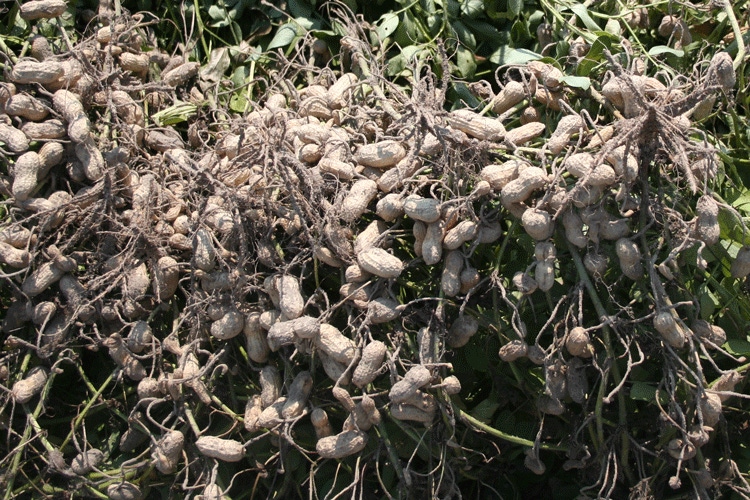
• The latest USDA reports have peanut production in the U.S. set at 3,832 pounds per acre, which is up 446 pounds per acre from last year. If harvest weather continues to be excellent, this could be the highest yielding peanut crop on record.• Cotton industry insiders fear a similar size acreage reduction in the Southeast may be in order for next year.
October 15, 2012

Too much cotton and too many peanuts has kept prices low throughout the 2012 growing season and the economic outlook isn't too rosy for next year as both crops seem headed toward large, if not record, crops this year.
The latest USDA reports have peanut production in the U.S. set at 3,832 pounds per acre, which is up 446 pounds per acre from last year. If harvest weather continues to be excellent, this could be the highest yielding peanut crop on record.
Price is another issue! According to some reports as much as 50 percent of Georgia’s peanut crop was grown without a contract. Though not as severe, it is likely some of the peanut crop in all Southeastern states was likewise grown without benefit of the contract. Selling peanuts into the government loan will be a losing proposition for many of these growers.
Peanut industry experts warned growers prior to planning time against over-planting. With plenty of peanuts already in the pipeline before the 2012 crop was planted, it seems apparent there will be an over-supply of peanuts and correspondingly low prices for the 2013 crop.
Cotton growers throughout the Southeast definitely planted fewer acres in 2012. The optimism for what had the potential to be a record crop was literally dampened by fall rains. Despite losses from wet weather, the 2012 cotton crop is still expected to be up by 11 percent from 2011 production.
Cotton industry insiders fear a similar size acreage reduction in the Southeast may be in order for next year. Continued instability in cotton prices, combined with high grain prices will make it difficult for cotton to compete for acreage into 2013 crop.
For beleaguered livestock producers in the Southeast the news is not good. The USDA estimates soybean production will be down by 9 percent from 2011 production. Combined with below average production in other parts of the world, it appears that global demand for soybean meal and oil will remain high and so will prices.
North Carolina has the largest acreage of soybeans among the Southeastern states and is usually a good barometer for overall production in the region. This year’s crop is estimated to average 35 bushels per acre, 1 bushel above the record yield set in 2009. Production is forecast to total 53.9 million bushels, up 30 percent from last year, and harvested acres are projected at 1.54 million acres, up 180,000 acres from 2011.
Corn production in the U.S. is estimated to be down by 13 percent from 2011 production levels.
Though corn production in most Southeastern states is projected to be up slightly, severe losses in key corn producing states in the Midwest seem certain to drive overall production down.
The combination of losses in both soybean and corn production seems certain to keep prices high. Subsequently, high grain prices seem destined to keep livestock numbers down.
In general, U.S. producers grew too much of commodities that are in an over-supply situation and not enough of crops that are in high demand on a global basis. This combination of production and economic realities is sure to make crop planning difficult for Southeastern growers in 2013.
About the Author(s)
You May Also Like





